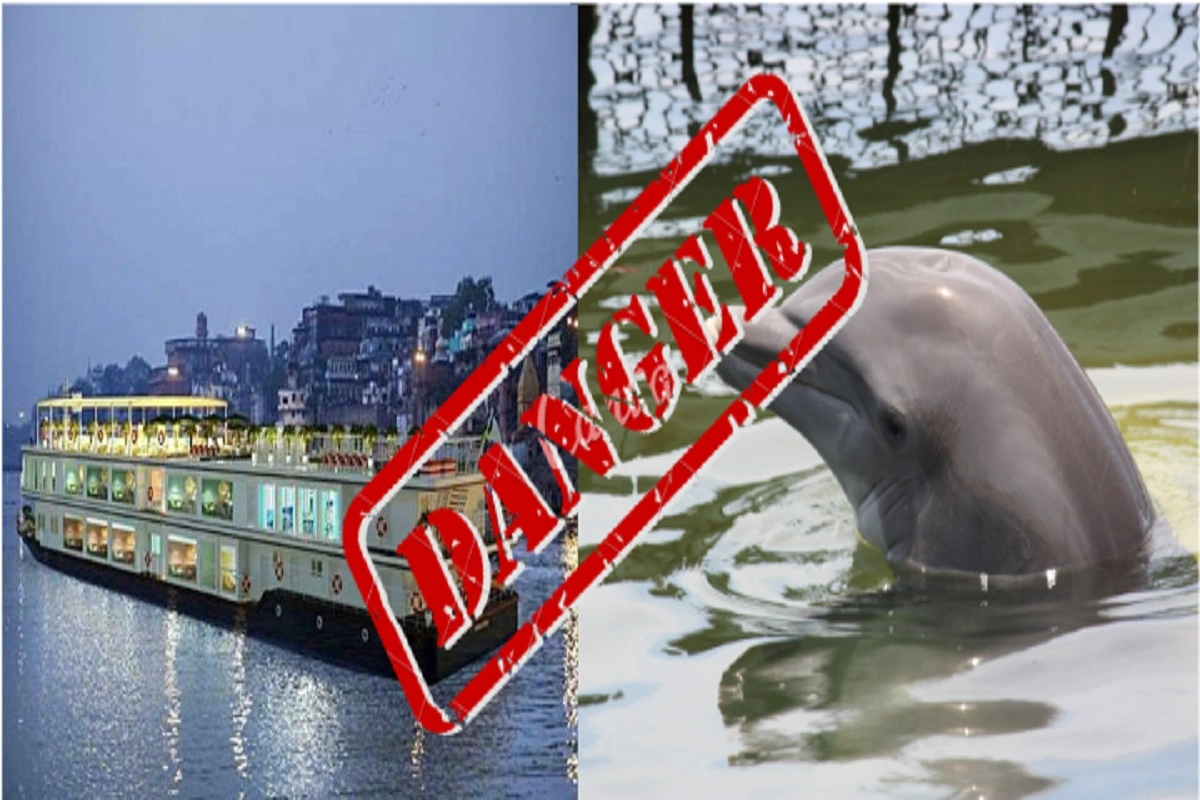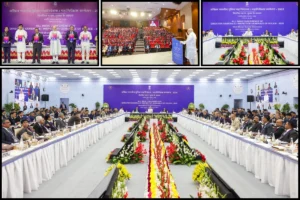
Gangetic dolphins will suffer the same fate as Baiji dolphins: Ravindra Kumar Sinha
The Indian Prime Minister, Narendra Modi has launched the “World’s Longest River Cruise” from Varanasi. The Luxury Voyage will be for 51days, Travelling 3,200km via Dhaka in Bangladesh to Dibrugarh in Assam, crossing 27 rivers.
However, environmentalists and conservationists fear the increase in cruises. Will have long-term consequences for the Ganges river dolphin’s habitat (Platanista gangetica).
World’s Longest River Cruise: The Fear Of Experts
The MV Ganga Vilas will pass through Kaithi village, 30 kilometers from Varanasi, at the confluence of the Ganges and Gomti Rivers, where deep water and slower currents provide a safe habitat for the endangered dolphin. Wildlife officials discovered a pod with calves in October, bringing the total number of dolphins in the area to 35 to 39.
It is one of several protected cetacean habitats along the cruise route, including the Vikramshila Gangetic Dolphin Sanctuary in Bihar.
Platanista gangetica is one of two freshwater dolphin species found in South Asia. The other is Platanista minor, also known as the Indus River dolphin. Which can be found in Pakistan and the Beas River in north India. Water pollution, excessive water extraction, and poaching are all threats to the Ganges river dolphin.

“The cruises are a dangerous proposition in addition to all the existing risks for the dolphins,” said Ravindra Kumar Sinha. Whose conservation efforts in the 1990s led to the government designating Gangetic dolphins as a protected species. Because of improved water conditions and conservation efforts. Their numbers have increased in recent years, with approximately 3,200 in the Ganges and 500 in the Brahmaputra. However, Sinha is concerned that cruise tourism will undo these gains. He believes Gangetic dolphins will suffer the same fate as Baiji dolphins in China. which were declared functionally extinct in 2006 due to increased Yangtze River traffic. “There is no doubt that disturbances from cruises will have a significant impact on the dolphins, which are sensitive to noise,” he said.
Gangetic dolphins are “almost blind,” using echolocation clicks to navigate murky waters and forage for food. “Underwater noise pollution due to increased traffic of cruise, cargo vessels, and mechanized boats interferes with the echolocation clicks, making their very existence arduous,” said Jagdish Krishnaswamy, an ecohydrologist at the Indian Institute for Human Settlements in Bangalore.
An environmental project carried out by the Inland Waterways Authority of India stated that behavioral changes in fish, dolphins, and turtles due to dredging noise “may not be significant” and mortality is not anticipated, because these organisms “normally move away from the dredging spots”.
Also Read 9 Vehicles Including Police Buses, Ambulance Set Ablaze; Know Real Reason of Buxar Farmer Protest !
Statements Of Experts
Besides that, Sunil Kumar Chaudhary is a member of the Bihar State Ganga rejuvenation, protection, and management committee. Projected that, Unlike the oceans, the river has a limited zone. And dolphins don’t have a vast zone to maneuver during dredging activity.”
Avli Verma, a researcher at Mathan Adhyayan center in Pune which is About the studies of water and energy policies, quoted that the government had set aside necessary environmental safeguards in favor of an “ease of doing business” approach.
“If precautionary conservation principles are not applied today, waterways will not be sustainable in the long term. You cannot promote cruises on Ganga as eco-tourism while endangering the habitat and the existence of Gangetic dolphins.”
To read more such news, download Bharat Express news apps


















